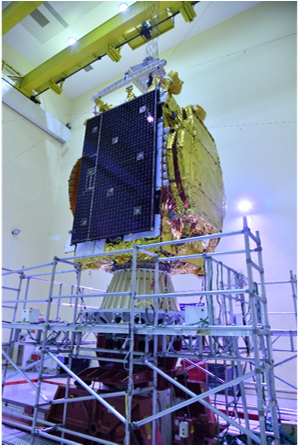India will launch its communication satellite GSAT-20 (new name GSAT-N2) using the Falcon-9 rocket of SpaceX, the company of billionaire businessman Elon Musk, in its first partnership with him. This satellite is planned to be launched in the second quarter of this year. NewSpace India Limited (NSIL), the commercial arm of the Indian Space Research Organisation (ISRO), said in a statement on Tuesday that the purpose of this high-capacity satellite is to boost India’s broadband communication, especially in remote and unconnected areas of the country. This satellite weighs 4,700 kilograms, which is more than ISRO’s current maximum spacecraft launch capacity of 4,000 kilograms. ISRO’s heavy satellite launch rocket GSLV-Mk3 is capable of placing a payload of four thousand kilograms in geosynchronous transfer orbit. This is why ISRO is using the services of SpaceX’s Falcon-9.
American billionaire entrepreneur Elon Musk’s company SpaceX will help the ISRO launch its satellite for the first time in August using the Falcon 9 rocket. The satellite, named GSAT 20, has been prepared as a spacecraft and will be sent to space from the United States. ISRO Chairman S. Somanath announced this at the India Space Congress 2024 in New Delhi. He mentioned that GSAT 20 satellite is ready as a spacecraft and will be launched into space using the Falcon 9 rocket in mid-August. The Falcon 9 rocket is 70 meters tall and operates with two stages. It has been launched successfully 358 times so far.
Previously, ISRO relied on France’s space agency Arianespace for this task. The French rocket has now been replaced, and development of the rocket that will take its place is underway. ISRO has the capability to send satellites into space. Many countries rely on ISRO’s assistance to launch their satellites, but when it comes to sending very heavy satellites into space, ISRO currently lacks this capability.
Similar Posts
GSAT 20 is a communication satellite. Its purpose is to provide communication services on Earth. The satellite has a high throughput capacity of 48 gigabits per second. It has 32 spot beams and will cover the entire India. This will provide connectivity from Northeast India to the Andaman and Nicobar Islands. The ownership and operation of this satellite will be done by New Space India Limited, a company associated with ISRO’s business ventures. GSAT-20 is a high throughput broadband communication satellite designed to enhance broadband services and in-flight connectivity in India. It is expected to operate for up to 14 years.


















